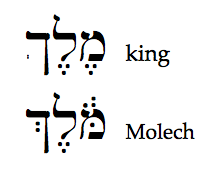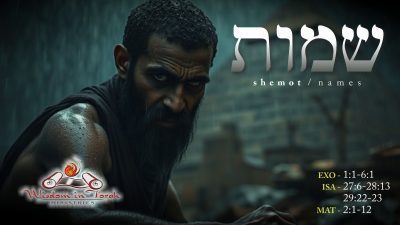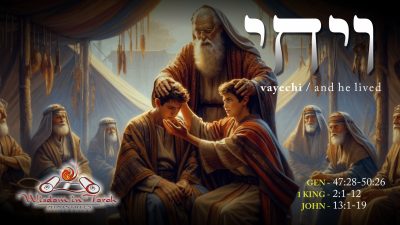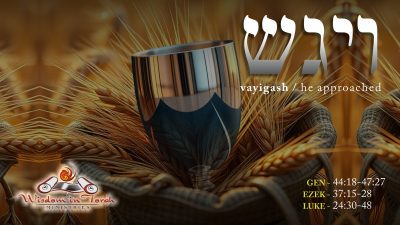
Don't Forget to Share!
MOLECH (DEITY) [Heb mōlek (מֹלֶך)]. Var. MOLOCH. Traditionally rendered Molech (or Moloch, representing moloch) the term is of disputed meaning; it occurs eight times in the OT text (Lev 18:21; 20:2, 3, 4, 5; 1 Kgs 11:7; 2 Kgs 23:10; Jer 32:35) and one time in the NT (Acts 7:43). Molech is found generally in contexts of cultic child sacrifice and particularly in phrases containing some or all of the words hʿbyr ʾt-bnw wʾt-btw bʾš lmlk (“to cause one’s son or one’s daughter to pass over by the fire to Molek”).
A. Theories Regarding the Meaning of “Molech”
1. Traditional Interpretation
2. Eissfeldt’s Reinterpretation
3. Weinfeld’s Theory
B. Philological Evidence
C. Biblical Evidence
D. Summary
A. Theories Regarding the Meaning of “Molech”
1. Traditional Interpretation. Traditionally, Molech has been understood as the name of a deity to whom children were burned in sacrifice, first by the Canaanites and then by the Israelites, particularly in a cultic installation known as the “Tophet” in the Valley of the Son of Hinnom, immediately south of Jerusalem. In favor of this understanding there is now a broad range of ANE literary evidence which suggests the worship of a god known as Malik or Milku/i from as early as the 3d millennium b.c. through the OT era. Malik was an extremely popular element in personal names at Ebla, although contexts are presently too scanty to permit firm conclusions regarding the god’s nature in the Eblaite cultus. The same god is also evidenced in personal names from the next (i.e., second) millennium at Mari, and in addition, we find in the Mari texts references to recipients of funeral offerings called maliku, apparently the shades of the dead or underworld deities. This netherworld connection is reinforced by the evidence from Akkadian texts, in which Malik appears in god lists, from the Old Babylonian period on, equated with Nergal and in which the mal (i)kū appear in connection with the Igigi and Anunnaki as chthonic beings involved in the cult of the dead ancestors. Finally, the comparative literary evidence moves closer to home for OT studies, as the Ugaritic texts list a god mlk resident at ʾṯtrt (Ugaritica V 7:41; 8:17), the same “address” as that assigned elsewhere to the netherworld deity Rpu (Rapiu), and testify to the inclusion of beings known as mlkm in the cult of the dead in contexts which suggest their similarity to (if not identity with) the rpum, the shades of the dead royal ancestors (known later in the Bible as the Rephaim, where the term has been broadened to include all the dead, e.g., Ps 88:11). From this evidence there emerges the picture of a netherworld deity involved in the cult of the dead ancestors (perhaps even their king, given the apparent associations with the West Semitic root mlk, “to rule, be king”).
2. Eissfeldt’s Reinterpretation. Since 1935 the discussion of Molek has been dominated by the thesis of O. Eissfeldt, that the term is cognate with the Punic mlk (or “molc[ h]” in Latin transcriptions) and is thus not a divine name or title but a technical term for a type of sacrifice. Mlk/molc (h) is found on several stelae excavated from Punic colonies in North Africa (such as Carthage) and the western Mediterranean islands, almost always compounded with another phonemic element (e.g., ʾmr/Lat omor), and dating from the 7th or 6th century b.c. to the 3d century a.d. Because the inscriptions regularly name Baal-Hammon (Latin Saturn) or Tanit as the recipient of the sacrifice, while the mlk + expression appears in a variety of syntactical positions within the inscriptions, Eissfeldt was persuaded that the latter were not references to a divinity, but terms for the sacrifice or its victim. Given the associations of the OT term “Molek” with child sacrifice and the depiction of lambs about to be slain on stelae inscribed molchomor, Eissfeldt proposed that the Punic mlkʾmr was testimony to the development of a practice of substitutionary sacrifice of a lamb (ʾmr; cf. Heb ʾimmēr) for the human child, while the other elements compounded with mlk had to do with other variants of the original practice of child sacrifice, the mlk per se. The latter was most provocatively attested in a single inscription (Constantine Neopunic 30) as lmlk, which Eissfeldt read, “as a molk-sacrifice,” and compared to OT lammōlek, the form in which Molek occurs in seven of the eight OT attestations.
Two independent sources of data have lent substantial force to Eissfeldt’s proposal. First, a long series of classical authors, from Sophocles in the 5th century b.c. to Dracontius in the 5th century a.d., write of the Phoenician and Punic practice of cultic child sacrifice by fire (see especially Mosca for texts and discussion). Second, archaeologists digging at Carthage and other Punic colonies in the western Mediterranean have located sacred precincts (or “tophets,” using the OT term) containing urns with ashes and bone remains of children and animals (see TOPHETH). Although such precincts have not always been discovered at the locales of the stelae bearing mlk-inscriptions, the evidence from Carthage, where the proportion of animal bones mixed with human appears to decrease over time, establishes the Punic practice of cultic child sacrifice under the term molk for most scholars, regardless of their views on OT Molech.
3. Weinfeld’s Theory. A third theory also requires mention, although it has to do not so much with the meaning of “Molech” as with the nature of the associated cult: Moshe Weinfeld’s (1972) proposal (following many medieval rabbis) that the cult of Molech was indeed directed to a pagan deity, Baal-Hadad (under the title of “king”), but that historically it never entailed actual sacrifice or burning of children, only their dedication to the deity in a fire ceremony. Weinfeld stresses the use of verbs which need not mean to sacrifice (ntn, “to give”; hʿbyr, “to cause to pass over”) in the descriptions of the cult in the OT legal and historical material, while explicit “death” verbs (such as śrp, “to burn”; zbḥ, “to sacrifice”; and šḥṭ, “to slaughter”) are found only in the references of the latter prophets and writings, which Weinfeld terms “moralizing” and “tendentious.” Although many scholars are sympathetic with Weinfeld’s qualms about the historical value of the prophetic and hagiographic references, most concur that he has overstated his case regarding the legal material, especially. The verbs ntn and hʿbyr may or may not of themselves entail sacrifice, but Num 31:23 suggests that hʿbyr bʾš (the phrase used of the cult in Deut 18:10 and elsewhere) does indeed entail burning in the fire.
B. Philological Evidence
The adjudication of the issue of the meaning of “Molech” is partially dependent on how one understands the word philologically. Scholars since A. Geiger (1857) have proposed that the form represents a “dysphemism,” or tendentious distortion, of the Heb melek (king) by substitution of the vowels of bōšet (shame); this was apparently done on occasion with baʿal (e.g., Ishbosheth). Thus, the term might have referred originally to a “king” god (or even Yhwh himself under that title). If this hypothesis is correct, the Punic cognate proposed by Eissfeldt would be lost and some understanding as a divine name or title necessitated. However, Eissfeldt and his defenders have raised cogent objections to the dysphemism theory, particularly as they have inquired why the simple substitution of the vowels ō-e should have suggested bāšet to the ancient reader, rather than any other word with the same vowels. For their part, they prefer to see in Molek an o/u-class “segolate” noun, cognate with the Punic molk. On the other hand, it is equally possible to see in “Molek” a form of the Qal active participle of mlk, meaning “ruler” (as would be suggested by the LXX’s translation archōn, in the Leviticus passages), or a derivative from an a-class segolate noun, like the Akk malku/maliku (“king”), so that the traditional explanation of Molek also remains viable.
C. Biblical Evidence
Inevitably, then, one must attempt a close reading of the biblical texts containing Molech and other related texts to attempt to settle the matter. Within the legal texts, Lev 18:21 and 20:2–5 are crucial because they contain five of the eight attestations of Molech in the MT. On the one hand, Eissfeldt and his supporters have shown that the MT vocalization of lmlk as lammōlek in 18:21 and 20:2–4 is quite likely in error: the LXX translates without the article, so that the original probably read *lĕmōlek, permitting comparison with sacrificial terms such as lĕʿōlâ (“as a burnt offering”) in Gen 22:2, so as to yield the rendering, “as a molk-sacrifice.” On the other hand, the removal of the article does not eliminate the traditional interpretation, and the juxtaposition of 20:5b (“I shall cut off him and all who whore after him, to whore after [the] Molech”) with v 6, which condemns “anyone who turns to the ghosts and the ‘knowers’ to whore after them,” is congruent with the portrait of the chthonic deity and denizens connected with the cult of the dead ancestors, as was seen above in the comparative literary evidence. Further support for the latter perspective appears in Deut 18:10, where “one who causes his son or his daughter to pass over by the fire” is condemned at the head of a roster of diviners and mediums.
The historical material compels us to ask after the provenance, duration and status of the cult of Molech in Israel (in addition to our questions about the meaning of the term). Of the two occurrences of “Molech” in the historical books, one (1 Kgs 11:7) is generally eliminated as a confusion of Molech with Milcom, god of the Ammonites (cf. 1 Kgs 11:5, 33). (It may be noted, for example, that the two deities have separate cult places defiled by Josiah in 2 Kgs 23:10, 13.) Otherwise, the cult is repeatedly attributed to the Canaanites as source (indeed, as the very archetype of their depravity [Deut 12:31; cf. passages cited below]), but it is not specifically mentioned in Israel until the reigns of Ahaz (2 Kgs 16:3) and Manasseh (2 Kgs 21:6), the villains of the Deuteronomic History. (Because of Ahaz’s religious impressionability on his trip to Damascus [2 Kgs 16:10–16], some scholars have argued for a Syrian or Assyrian source for the cult.) Outside of a general accusation against the N kingdom (2 Kgs 17:17) and a specific indictment of the Sepharvites exiled by the Assyrians to the province of Samaria for “burn[ing] their children in the fire to Adrammelech and Anammelech” (2 Kgs 17:31;), see SEPHARVAIM the cult is attested solely in the “tophet” of Jerusalem’s Valley of the Son of Hinnom, which Josiah then defiled as part of his elimination of Canaanite influences on Judah’s worship (2 Kgs 23:10). Whether the cult was later revived is disputed: it is not again mentioned in the history, but Jeremiah (7:31–32; 19:5–6, 11; 32:35; and probably 2:23 and 3:24) and Ezekiel (16:20–21; 20:25–26, 30–31; 23:36–39) or the practice, while Isa 57:5, 9 may indicate some survival of the cult after the exile (particularly if melek in v 9 is to be read as mōlek; cf. RSV).
Thus, given the relative paucity of clear references to the cult of Molech, it is decidedly difficult to reconstruct its history with confidence; it is equally difficult to comment with authority on its legal or social status during that history. Eissfeldt contended that the sacrifices had been directed to Yhwh as part of the licit, state religion of Judah until Josiah’s reform, after which they faded from memory until the original significance of “Molech” was forgotten and the deity born of desperation to interpret the OT references. In fact, the licit status of the cult may be proposed, even if one holds for the traditional understanding of the term, and particularly on the basis of Isa 30:33, in which the prophet, presumably during Hezekiah’s reign, depicts the Tophet as prepared to receive the Assyrian king in sacrifice (on this reading the Canaanite cult of Molech would have been subordinated at Jerusalem to that of Yhwh). As for the sociological nature of the cult, many scholars (including Eissfeldt) have argued that the practitioners were parents offering their firstborn sons in (mis-)obedience of the “Law of the Firstborn” in Exod 13:2, 11–15; 22:28b–29—Eng 29b–30; and 34:19–20 (cf. Ezek 20:26). However, this seems unlikely, given the references to sons and daughters as victims (2 Kgs 23:10 and elsewhere) and perhaps even to multiple victims within a family (2 Chr 28:3; 33:6).
It is not surprising, given the aforementioned shortage of evidence, that scholars have struggled to find additional references to the cult of Molech. Often the search entails revocalizing MT melek in a provocative context. It might be noted that in this activity such scholars are but following the lead of the LXX, which reads Moloch in Amos 5:26 (followed by the NT in Acts 7:43) and Zeph 1:5 (but archōn in Lev 18:21; 20:2–5 and basileus in 3 Kgs 11:5 [MT 1 Kgs 11:7]!). Other verses commonly included in the discussion by this means include 2 Sam 12:30 (=1 Chr 20:2); Isa 30:33; 57:9; Jer 49:1, 3 and the Milcom references in Kings, listed above. Since melek is an extremely common noun (with over 2,500 occurrences), there is much fodder for speculation, but, with few exceptions, such proposals have commanded little assent.
Other attempts to expand our understanding of the cult have involved appeals to passages concerning child sacrifice or, more broadly, human sacrifice. In addition to the “Law of the Firstborn,” discussed above, special stress has been placed on the “Akedah” account (Genesis 22), the vow of Jepthah (Judges 11), King Meša’s sacrifice of his son (2 Kgs 3:27) and such prophetic allusions as Hos 13:2; Mic 6:7; and Isa 66:3. While none of these clearly has to do with the cult of Molech (particularly if one concedes that the cult was not necessarily of the firstborn son), they can, to a greater or lesser degree, all assist in illuminating the worldview of those who engaged in the sacrifice of their children.
D. Summary
The “Molech question” remains a good candidate for what Adolf von Harnack once called it: “the greatest question, without a doubt, of the comparative history of religion.” We can say what it was apparently not: neither a regular cult (such as one of firstborn sons) nor an occasional one based on military emergency (such as is exampled in 2 Kgs 3:27) seems congruent with the clear biblical references. The repeated occurrence of references to the Molech cult in contexts suggesting divination, along with the chthonic connections of the god Malik (Milku/i) in the comparative literary material, suggest that the sacrifices played a role in the cult of the dead ancestors (so explicitly in Ps 106:37–38), while the OT historical references suggest that the cult was adopted from the Canaanites and practiced mostly (if not exclusively) by the residents of Judah (especially the kings) in the Valley of the Son of Hinnom. See DEAD, CULT OF THE.
As for the meaning of “Molech,” the Punic inscriptional and archaeological evidence adduced by Eissfeldt and his supporters presents a strong case for their contention that a cult similar in many respects to that found in Israel was practiced in the Punic colonies. However, the connection of the biblical cult with the Punic practice and the term used to describe it remains loose: no secure archaeological or inscriptional evidence for the presumed Punic/Israelite “missing link” in Phoenicia has been unearthed to date. Indeed, the use of non-inscribed stelae in the earliest layers of the Punic “tophets” leaves open the possibility that the Punic usage of molk was an intra Punic development, rather than a feature common to Israel, Phoenicia, and the Punic colonies. On the other hand, those favoring the traditional interpretation must concede that the portrait of a god Molek remains frustratingly difficult to draw with precision, and that the ultimate “why” of the cult occasions much speculation, but little certainty.
Bibliography
Eissfeldt, O. 1935. Molk als Opferbegriff im Punischen und Hebräischen und das Ende des Gottes Moloch. Beiträge zur Religionsgeschichte des Altertums 3. Halle.
Heider, G. C. 1985. The Cult of Molek: A Reassessment. JSOTSup 43. Sheffield.
Mosca, P. G. 1975. Child Sacrifice in Canaanite and Israelite Religion: A Study in Mulk and mlk. Ph.D. diss. Harvard.
Weinfeld, M. 1972. The Worship of Molech and of the Queen of Heaven and its Background. UF 4: 133–54.
ANE Ancient Near East (ern)
3d third
3d third
LXX Septuagint
Akk Akkadian
MT Masoretic Text
MT Masoretic Text
LXX Septuagint
N north (ern)
RSV Revised Standard Version
MT Masoretic Text
LXX Septuagint
MT Masoretic Text
JSOTSup Journal for the Study of the Old Testament Supplement Series
diss. dissertation
UF Ugarit-Forschungen
Heider, G. C. (1992). Molech (Deity). In D. N. Freedman (Ed.), The Anchor Yale Bible Dictionary (Vol. 4, pp. 895–898). New York: Doubleday.
Oops, this is members-only content
This page requires at least a Basic level membership to access the teaching.
Audio
Oops, you don't have access to this content
Resources
The following is a list of recommended resources for this teaching:
- More resources coming soon...
Categories
2 thoughts on “Did you know about Moloch and what it represents?”
Leave a Comment
You must be logged in to post a comment.







Rico,
I do not, often enough, take time to leave you any comments, even though you have given, and given, and given, so much of your heart, your zeal for Yeshua and YHVH, and your love for all believers in YHVH, in Yeshua, …!! aagh!! So awful of me, brother!
Could you find it in your heart to forgive me, for not letting you know the hundreds (literally!) of times I have been so blessed I shouted out to YHVH in thanksgiving, for an insight you shared, that connected with other truths and concepts YHVH has been teaching me over many years (I am 58, now)!!
I rejoice with you, brother, to get the wonderful opportunity to learn anything our awesome Creator and King wants us to know, as the ones He calls His children!! — Reminds me of that humorous thought, which you have also shared: too bad He does not see us as grown ups. : ( Oh well, “the shoe fits,” though we wish it did not! ha ha
Shalom Shalom, brother, as those two words together bring to my mind verses Isaiah was compelled / led to write down, in Isaiah 26:3-4, translated into English in the KJ version as “perfect peace” (complete peace, wholeness, [good] health, healing, rest, and … maybe even the idea of prospering us in our souls, as we choose, moment by moment, to humble ourselves, submit our wills and mind’s thoughts to Him Who designed us to keep our eyes on Him, even while we do our necessary labor and keep our responsibilities prioritized, … and as we willfully choose to “abide in,” “dwell in,” the Presence of Yeshua. Peter / Shimon Kefa, one who is like my heart is, often, was so thrilled to see that Yeshua was near the boat he and the other talmudim were in, began to walk on the water toward Yeshua, and … he only stayed above, or, from a human viewpoint, on the water’s surface, “while” he kept his eyes focused on Yeshua, and His outstretched Hand! And, that brings to mind another verse, that you know, Rico. (etc., etc. — I did try to keep it short! Didn’t work, did it?! ha ha)
So, … Shalom Shalom, brother Rico!
May YHVH richly bring to you and your family the fruit of your labors, and increase your outreach, to more and more, so that the message YHVH has placed on your heart / soul will be received by many more people, because I know it has so blessed my soul and my life, that I often find myself trying to remember just how you stated a truth that you’ve discovered in all your reading, with someone else, … though I often fail to remember how you worded it. oh well…. YHVH’s Ruach can fill in the gaps in what I had hoped to share with another sister or brother in Yeshua! right?
Take care and know that many, many more do listen to what you share, than the few who write to your in the comments, here!! many more!! — Kathy, in n.e. TN, but a Texan at heart — friendly, a smile on my face, and enjoy seeing those who will venture out of the ordinary and into the open space that is full of the liberty found in YHVH’s teachings / Torah, that Ya’akov, Yeshua’s brother, (James) speaks of, … in James 1:25, and as David speaks of in Psalm 27 and in Ps. 116.
What a great discovery!! So glad you found this place to help us understand the ways of our King!!!!
Thank you Rico for your passion and dedication to share the truth!!
Your friend,
Sinda